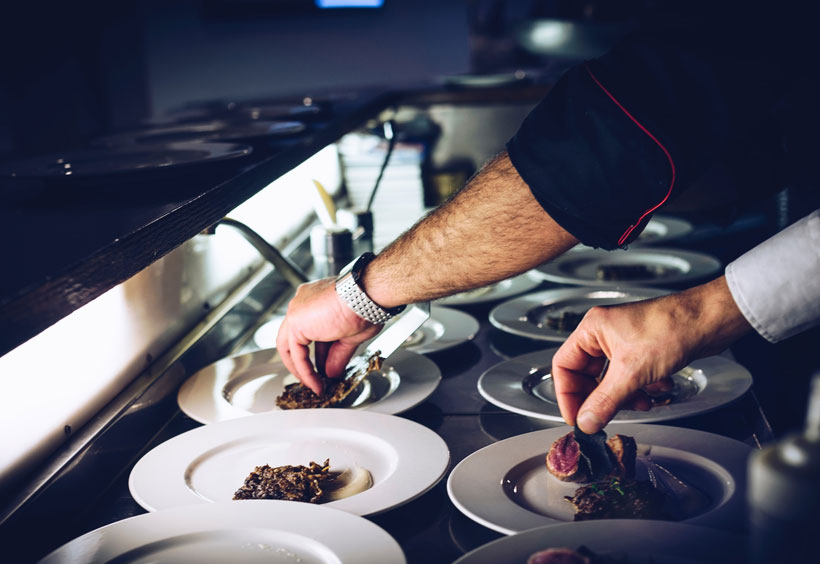How to Start a Personal Chef Business
Sparkpush Editorial Team
Updated November 30, 2023
Edited by: Mike Shelby

Learning how to start a personal chef business is akin to orchestrating a sumptuous feast for the senses. This culinary venture demands more than just a mastery of flavors; it requires an innate sense of creativity and a generous dash of entrepreneurial spirit. In this comprehensive guide, we’ll unravel the art and science of establishing a thriving personal chef business.
Section 1: Unveiling the Culinary Landscape
Overview
Before you jump into starting your personal chef company, immerse yourself in the culinary landscape. Explore prevailing culinary trends, identify your niche, and discern the appetite for personalized culinary services in your target market.
Market Exploration
Delve into a thorough exploration of the culinary market. Gain insights into the preferences of potential clients, study your culinary competitors, and hone your services to cater to the discerning tastes of your clientele.
Section 2: Pros and Cons
Exploring a personal chef business is a delectable journey filled with exciting prospects and, of course, a few challenges. Let’s review the pros and cons before you savor the flavors.
Pros
- Culinary Artistry: Personal chef services allow for the ultimate expression of food artistry, enabling you to craft unique and unforgettable dining experiences for your clients.
- Flexible Calendar: Enjoy the liberty of setting your schedule, particularly for bespoke events that may unfold during evenings or weekends.
- Diverse Palates: Relish the opportunity to cater to a diverse range of palates, creating bespoke menus for various occasions, adding a delightful variety to your culinary repertoire.
- Feast of Satisfaction: Witnessing the joy your creations bring to your clients is a feast of satisfaction in itself.
- Network in Culinary Circles: Personal chef services open the door to networking opportunities within the culinary community, helping you build valuable connections.
Cons
- Pressure: Crafting culinary masterpieces often involves tight timelines and unforeseen challenges, leading to increased stress, especially as events approach.
- Financial Flavors: The income in the early stages may be lacking, with financial stability taking time to establish.
- Sizzling Competition: The culinary industry is competitive, requiring effective marketing and networking to stand out among fellow chefs.
- Marathon Hours: Preparing and serving awesome dishes can demand long and irregular hours, especially during peak holiday seasons.
- Palate Dependence: Success depends on pleasing and retaining clients, emphasizing the consistent delivery of exceptional culinary experiences.
Section 3: Sharpening Your Skills
Skillful Enhancements
Refine your culinary skills by seeking relevant education, certifications, and hands-on experience. Consider participating in culinary competitions, joining relevant associations, or taking courses to stay abreast of industry trends and best practices.
Creating a Master Portfolio
Assemble a diverse culinary portfolio showcasing your expertise. Include details about past events you’ve catered, highlighting your ability to curate various experiences, from intimate dinners to grand soirees.
Section 4: Crafting a Business Plan
Culinary Blueprint
A meticulously crafted business plan serves as your culinary roadmap to success. Outline your goals, target market, services offered, pricing strategy, and financial projections. A detailed plan will not only guide your decisions but also appeal to potential clients.
Legal Aspects
Navigate the legal aspects of your new enterprise, including choosing a business structure, registering your brand, and obtaining the necessary permits and licenses. Consult with legal professionals to ensure compliance with local culinary regulations.
Section 5: Setting Up Your Culinary Haven
Headquarters
Establish a functional and inspiring culinary workspace for your creations. Whether you’re operating from a commercial kitchen or working remotely, invest in top-notch tools and software for efficient management.
Nurturing Relationships
Forge robust relationships with suppliers and fellow food artisans. Creating a network of reliable partners is essential for seamless culinary executions and can lead to delightful collaborations.
Section 6: Branding and Marketing
Crafting an Identity
Develop a distinct brand identity that reflects your style and values. Design a logo that echoes your philosophy, choose a color scheme that tantalizes the senses, and create a visually appealing website. Consistent branding across all platforms establishes credibility.
Digital Mastery
Utilize digital marketing strategies to whet the appetites of your target audience. Leverage social media platforms, create engaging food content, and invest in search engine optimization (SEO) to enhance your online visibility. Consider paid advertising for targeted reach.
Section 7: Finances and Pricing
Financial Artistry
Implement effective financial management practices, including budgeting, invoicing, and meticulous record-keeping. Utilize accounting software to track expenses, revenue, and profits.
Pricing Your Culinary Art
Determine your pricing strategy based on factors such as the type of event, complexity, and your level of expertise. Craft bespoke culinary packages and competitive pricing while ensuring the savor of profitability.
Section 8: Culinary Client Harmony
Savory Communication
Establish clear lines of communication with clients to savor their visions and expectations. Regular updates and transparent communication build trust and contribute to successful collaborations.
Mastering Challenges
Anticipate and prepare for challenges that may arise during events. Develop problem-solving skills and maintain a calm and collected demeanor under pressure. A successful personal chef is adept at finding solutions in real-time.
The Best States for Culinary Adventures
Below is a list, not in a specific order, highlighting cities that are generally known for their vibrant culinary scenes and thriving business environments. Keep in mind that the suitability of a state can depend on various factors specific to your business and goals.
- California
- Texas
- New York
- Florida
- Georgia
- Illinois
- Colorado
- Washington
- Massachusetts
- North Carolina
- Arizona
- Pennsylvania
- Oregon
- Ohio
- Michigan
- Virginia
- Minnesota
- Tennessee
- Wisconsin
- Indiana
- Missouri
- Maryland
- South Carolina
- Utah
- Nevada
- New Jersey
- Connecticut
- Kentucky
- Louisiana
- Oklahoma
- Iowa
- Mississippi
- Arkansas
- Alabama
- Kansas
- Nebraska
- West Virginia
- Hawaii
- New Mexico
- Maine
- Idaho
- New Hampshire
- Montana
- South Dakota
- North Dakota
- Wyoming
- Vermont
- Alaska
- Rhode Island
- Delaware
The Bottom Line
Starting a personal chef business is a harmonious blend of creativity, culinary skills, and entrepreneurial gusto. By savoring this comprehensive guide, you’ll be well-equipped to navigate the savory nuances of the industry and build a successful personal chef venture. Remember, every dish you prepare is an opportunity to create lasting culinary memories and build a stellar reputation in the flavorful world of personal chef services. Bon appétit on your culinary adventure!








